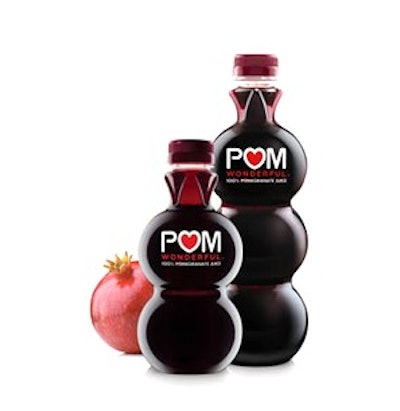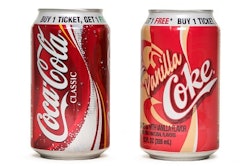
While statistics vary among reports, they all agree that packaging influences the majority of all purchasing decisions (from 70% to 85% of them).
This power comes from the fact that (package) design is a powerful communications tool. In selling environments, design contributes to brand and product visibility, impact, and memorization. It also stimulates the senses, creates expectations, and generates perceptions of quality, performance, and value. In short, packaging relies upon design to eliminate doubt and compel purchase by establishing credibility.
What is credibility? I’ve found several definitions that, while slightly different in tone and direction, are altogether accurate:
1. The power to inspire belief.
2. Offering reasonable grounds for belief.
3. Sufficient capacity to be effective
Along with these definitions, words such as “plausible,” “authentic,” “reasonable,” and “satisfying” come into play. One other word cannot be overlooked when defining credibility. When it comes to package design and other marketing-related activities, the most important word of them all is “sales.” Without sales, nothing else matters.
It’s important to understand that credibility is completely subjective. Let’s look at one simple example to illustrate this point: barbeque restaurants.
There are lots of places that make truly exceptional barbeque—from pulled pork and sliced briskets of beef to baby back ribs and chicken wings—all dripping and delightfully sticky from that oh-so-special sauce. What’s interesting is that some of the most “credible” barbeque places are little roadside shacks, well off the beaten path, with hand-made grills that look as if the whole operation would fall over from the slightest gust of wind. At the same time, there are architecturally stunning restaurants, in big metropolitan centers, with state-of-the-art kitchens that actively compete and enjoy the same high regard from its patrons.
Know your consumer
In both cases, credibility is undeniable. The difference is found in the patrons. Each of the restaurateurs who run these establishments knows exactly who their customers are, makes an effort to understand their needs, and wants and gives them experiences that live up to their expectations. (I find the joy of great barbeque comes from the contrasts between culinary excellence and the restaurant’s structural decrepitude.)
We already know that, for packaged goods, credibility starts with design. Most recently, and based on structural design alone (shape, material, functionality, etc.), the most impactful design I’ve encountered is the Pom Wonderful pomegranate juice bottle. Retailers love its distinctive proprietary shape. Whether consumers are embracing this relatively new fruit flavor and juice experience will be proven over time. We all know there are far more product failures than successes, even when every detail is executed exceptionally well and credibility is confirmed.
When it comes to creativity in graphics, I’m a big fan of what’s happening in the tea industry. The intensely competitive nature of this category is bringing out the best in design. Brands such as Tazo, Revolution, and Teosophy are embracing design at its highest levels. While my discussion will not include functional design, I find the little pyramid-shaped tea bags that Teosophy employs simply exquisite.
What’s beyond the package?
Once you’ve produced a wonderful package that stops traffic, appeals to the emotions, and communicates value, there are a number of marketing tactics you can employ to get buyers (trade and consumer) interested in your products in advance of an initial sale. Additionally, you’ll want to keep them interested after the first sale is made so that repeat and frequent purchases are the inevitable next step.
Purchases are negotiated and transacted in a variety of selling environments. If it’s a trade (wholesale) purchase, the transaction could occur in many places, from the conference room in an office to the tailgate of a delivery vehicle. While these are realistic scenarios, I’d like to focus on trade shows and the environments you can create in these rarified and exclusive settings.
As with packaging, you want to create attention, arouse the emotions, and compel inquiry. Since trade shows are busy, noisy, and distracting affairs, the same elements of design that made your packaging credible must now be applied to your booth. Shape, structure, size, color, typography, illustration, photography, copywriting, etc., are all important. Since these events are “live,” consider additional influencers such as sound, smell, and motion.
DeLonghi, a producer of household appliances, has the only booth that I feel has been successful on every level. While other booths are entertaining, inviting, and memorable, DeLonghi’s booth is in a class by itself. It is visually and structurally distinctive, emotionally compelling, and functional, as well as easier to assemble and cheaper to transport than most structures that require comparable space.
Alternatively, and when it comes to consumers, it is primarily the retailer’s responsibility to make an attractive, inviting and compelling in-store experience. Marketers’ opportunities to contribute are found in point-of-sale displays, shelf talkers, end cap displays, and case stacks. For all of these options, the design must complement and reinforce the structural and graphic features of your packaging. In addition, you want to be sure retailers will be willing to use the display devices you create. With the growing popularity and perceived value of store brands, retailers hesitate to use promotional materials that may compete with their own brand-building efforts. When circumstances allow, credibility will be achieved through quality and consistency of presentation.
What about Web sites?
Web sites, which complement packaging as part of any effective marketing program, have become a significant and influential promotional tactic linked directly to perceptions of credibility. When buyers encounter your brand or product and want to learn more, they will inevitably seek out your Web site. No matter how appealing your product or package, or how persuasive your in-person sales pitch, your Web site must be every bit as good. Your site, to be credible, must succeed graphically and technically.
Web sites rely on technologies that even the best-trained developers do not entirely understand or have the skills to implement. In many cases, and for a variety of reasons (level of investment is always a significant factor) establishing visual and technological credibility at the same time is frequently difficult.
The first step is to make sure that all of your relevant messages are in place and easy to find. Web sites of this nature are considered “brochureware.” More credible Web sites will provide greater depth of information and interactivity, anticipate visitor agendas, enhance relationships, and generate revenue (directly or indirectly).
It is important to know that some Web developers equate “entertaining” with “credibility.” While “entertaining” sites may satisfy some of your marketing objectives, it’s important to know whether your visitors want to be entertained or simply conduct business. I find many Web sites off-putting because the “bells and whistles” keep me from conducting business quickly and efficiently.
Two few sites I enjoy and find relevant to their categories are www.chipotle.com (Mexican fast-food) and www.nike.com (sports apparel).
Of course, brochures, catalogs and other sales literature are important. While the same information may already be available online, brochures provide a hands-on, tactile experience from which credibility is established or confirmed. No matter what style of literature you produce, make it every bit as appealing as your packaging, trade show booth, and Web site. If the literature is a “keeper,” credibility is established with the likelihood of sales close behind.
Advertising, direct marketing (including email campaigns, post cards and high-impact mailers) and public relations are additional tactics that influence credibility. They contribute to the frequency in which buyers encounter your brand and the speed in which they come to understand and appreciate its value. Consistency of message, quality of presentation, and obvious relationship to the package are essential.
Jeffrey Spear provides strategic and creative leadership for Studio Spear, a marketing consultancy based in Baltimore, MD.
























